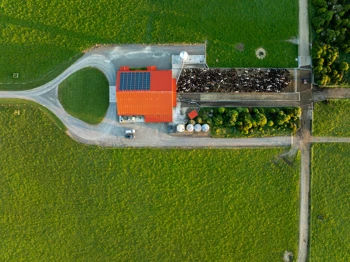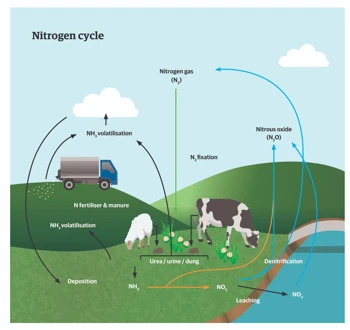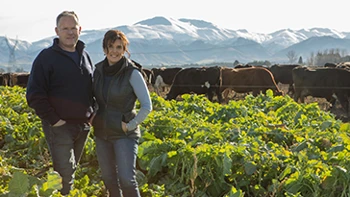News & Advice

Sub-surface irrigation helps improve water-use efficiency
Drip irrigation is the most advanced and efficient of all irrigation methods and involves burying dripline in strips underground. With a limited consent to take water from the Ashley River, Ravensdown customers Russell and Rose Rudd have installed sub-surface drip irrigation to ensure the water they are allocated is used efficiently, reducing their water use by 30%.
Russell and Rose farm 600ha alongside the Ashley River, typically wintering 2,000 ewes, 350 hinds, 200 cows and finishing all stock.
They have consent to take 1,800 cumecs of water from the Ashley River but only when it flows over six cumecs. This is not often, so they usually have only 40% of this allocation. Using sub-surface irrigation, they have found they can cut back the irrigation requirement/ha by 30% over a typical summer. The Netafim DripNet has 50cm dripper spacings and delivers 1.6mm/ha/hour of irrigation water.
Russell was familiar with dripper irrigation, having used flexible pipes strung along a wire through his Marlborough vineyard, so when it came to irrigating a 11.5ha pasture block on his Rangiora farm, he decided to install it, buried 300mm below the surface and with pipes 1m apart. “I was confident dripline works as I’ve had it for years in the grapes.”
Working with ThinkWater Canterbury, the irrigation has been in for three years⁽¹⁾. The first two years it grew a “waist high” crop of peas/oats for silage, winter oats, permanent pasture mix of plantain/chicory and other mixed species.
Russell expects 40 years out of the investment. “This is far longer than vineyard dripline out in the sun, with hares and machinery knocks.”
He considers the $11,000/ha installation cost well worth it. Pivots are about $5,000/ha or more.
“There is no cheap option for water, and this suits the block.”
Lines were mole-ploughed in 1m apart and heavy rolled to close up the rip lines. Russell thinks 800cm spacing would be better so the wet areas join more quickly.
“We could see some ripples across the crop but regular irrigation soon had the whole area damp.”
He says the block leant itself to underground irrigation. It had a 20m climb up to the start, rising another 20m to the top of the block. The Rudds had an existing mainline going to 50ha of hard hose gun irrigation, which the dripline could join to.
The soil was clay loam with a good top soil; soft and easy to rip. Issues have been seen with very stony vineyard blocks where dripline can be crushed.
“In hindsight I should have deep cultivated the whole block, rather than just deep ripped in water lines, as water tended to sit in the ripped lines in the first few months.
“It’s moved out now though, through capillary action.”
Russell says one of the benefits is that it’s so easy to run. “Just set it up on a timer, flush the end valves monthly and walk away.
"If you see a leak with water pooling or running down a slope, you can dig it, join and cover.”
Furthermore, sub-soil irrigation allows fertigation with nitrogen or biological stimulants directly to the roots as an option.
By Joanna Grigg
References
To see a video of the Rudds' subsurface installation, see https://thinkwatercanterbury.co.nz/services-and-solutions/irrigation/sub-surface-drip-irrigation



